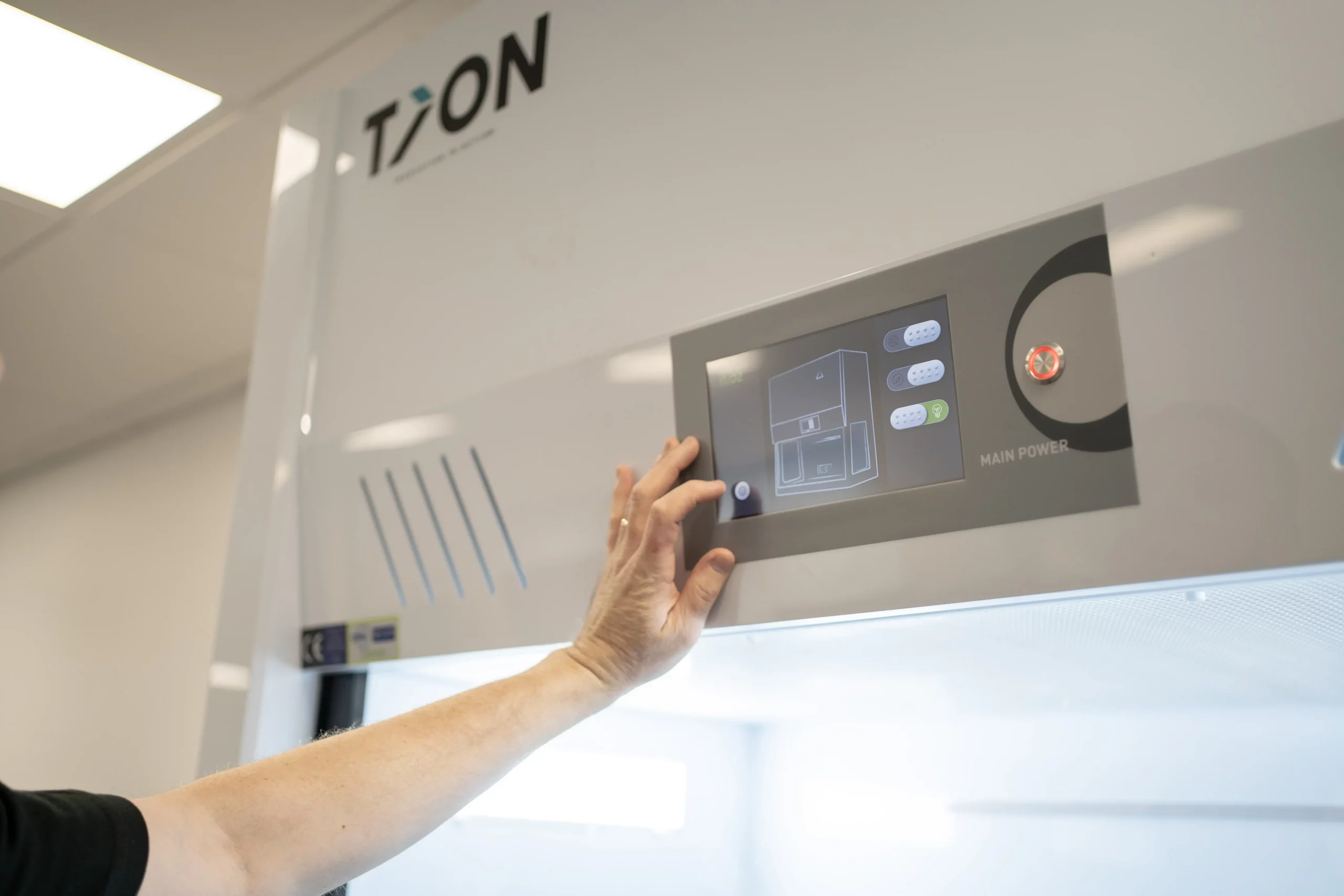
Laboratories all over the world use fume cupboards on a daily basis. They are commonly found in hospitals, research laboratories, schools and many other environments. And they are designed to keep everyone safe at work.
Whether you are looking for a new FC for your facility, or you’ve had your equipment for some time, it is essential that everyone involved is aware of how to use it safely. As with all lab equipment, fume hoods have some do’s and don’ts that your entire team need to keep in mind.
As experts in clean air solutions, we’ve put together this ultimate do’s and don’ts guide on how to use your equipment safely and efficiently.
You and your team should only ever use a fume hood when it is switched on and the airflow is in the required range. There should be an airflow monitor with your unit, which will work to measure the airflow in the device. There are various types of airflow monitors, and every cabinet must have one to ensure safe use of the equipment.
For the best results, air flow monitors must be calibrated in a real world setting and in the location that it will be used. The recommended face velocity for a fume hood is between 0.3m/s (60fpm) and 0.5m/s (100fpm). No one should use a fume cabinet before double checking it is switched on and the air flow is correct.
Depending on the type of FC you have, it is likely that you will have a safety sash fitted. This is the front window of the cupboard, which allows access to the work station. The safety sash is essential for both containment and protecting users from hazardous materials.
Before using the fume cupboard, you should check that the safety sash is at the correct level. For most hoods this is 18 inches or lower, and it will be indicated by an arrow on the equipment.
Personal Protective Equipment (PPE) is there to keep everyone safe while using your unit. That means, before using, you must be wearing the appropriate safety equipment, including eyewear. The type of PPE that you and your team need will vary depending on your application and the type of materials being handled.
Usually, PPE for a fume cabinet includes lab coats, gloves, and eye or face protection. In some situations, a full body, air-supplied positive pressure suit could be required.
Before using any equipment or chemicals within your cabinet, you must ensure you know how to use them safely. Heat generating equipment can disrupt the air flow in a fume cupboard and create unwanted air currents. When using these devices, place them at the rear of the unit. Chemicals also need to be properly handled, and if you are unsure on a chemical and the safe way to use it, consult relevant safety data sheets.
Everyone in the laboratory should be responsible for ensuring equipment is operating safely. If anyone notices an issue with the fume hood, or it is not functioning properly, the lab manager should be notified immediately, and the equipment should not be used.
Appropriate safety notices must be placed on the unit to let others know it cannot be safely used until repairs are carried out.
Only individuals who have undergone appropriate training should use this specialist laboratory equipment. If you or anyone in your lab has not had training for safe use of a fume hood, then they should not use the equipment until training is completed.
It is recommended to conduct refresher training on a regular basis, so that everyone has an up-to-date knowledge of how to safely work with one.
Air flow is crucial to it operating safely, and this should never be blocked in any way. Keep the baffles and baffle exhaust slots completely clear at all times. Blocking the air flow will not only prevent the equipment from working properly, but can also be a safety hazard.
When you are using chemicals on a regular basis, it can be very tempting to store them in there on a permanent basis. Despite what may be deemed as a hassle, it is essential that all chemicals are removed from the workspace and appropriately stored when not in use.
Dedicated equipment such as a chemical storage cabinet should be used to store hazardous materials.
Positioning fans across the face or safety sash will interfere with air flow. This can prevent the hood from properly containing the dangerous chemicals, and also impact the use of the equipment.
If fans are needed in the laboratory, position them well away from the unit. It is also important to consider drafts and heavy foot traffic areas, which could impact the air flow within the cabinet. Try to position FC’s in quiet areas of the lab.
They are specifically designed and created for safe use of certain chemicals and applications. You should never use this equipment for anything else, such as radioisotopes or perchloric acid.
Biohazardous agents should never be used either. For that, you need a biosafety cabinet.
Using this equipment with the wrong chemicals can be very dangerous to everyone in the lab, so don’t do it!
Whenever it is not in use, the safety sash should be closed. Leaving the sash open when unattended or not in use can be a big safety concern. Not only that, but closing the safety sash can contribute to significant energy savings in your laboratory.



No thank you
Read our Privacy Policy for more information on how we collect and process data.